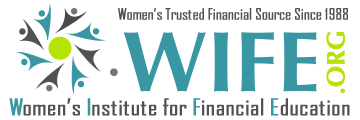 That big check you get in the mailbox after April 15 is your fun money, right? It’s your free gift from your kind Uncle Sam, who has so thoughtfully given you this chance to go on vacation or have fun at the mall.
That big check you get in the mailbox after April 15 is your fun money, right? It’s your free gift from your kind Uncle Sam, who has so thoughtfully given you this chance to go on vacation or have fun at the mall.
Not really.
That check is the repayment of interest-free loan that you gave to the government last year. It’s your money, just like your monthly paycheck. And the only difference is that it comes in one lump sum after you file your tax return, with US Treasury written across the top.
Since it’s your money, here are some suggestions on what you can do with the refund to make it meaningful in your financial life.
First of all, set aside a portion of the refund check, perhaps 20 percent, for your own immediate personal pleasure. Spend some time planning how you will spend this small windfall, and really enjoy the process. Buy an experience that you will always remember or something beautiful or useful for yourself.
Then, get down to business.
If you have credit card debt, this tax refund can be just the thing you need to jump start a debt reduction plan. Use your refund check to pay down the credit card with the highest interest rate. At the same time, sit down and create a plan to reduce your debt. This is a wonderful time to discuss debt and savings with your entire family, and teach your children the value of planning for the future and financial independence. (If you’re in debt and looking to get out, check out our 21-Day Debt Makeover).
If you are not in debt, you can use this money to set up a cash emergency fund, a special fund of cash set aside for genuine emergencies. This is not the money to tap when you need a new couch or you’re dying for a weekend away. This is money for a time when you need to pay for something you or your family really needs. The security provided by this treasure-trove of money is invaluable.
If you already have money set aside, use the refund to increase your retirement plan contribution at work. Depending on your salary and your company’s policies, you can increase your contribution by the entire refund for one paycheck and then decrease it for the next, or slowly set aside an amount equivalent to the tax refund you received.
If you don’t have a retirement plan at work or you are already contributing the maximum, use your tax refund to contribute to a Roth or traditional IRA. As long as your income is below the limitations ($110,000 if single, $160,000 on a joint return) you can contribute to a Roth IRA. Otherwise, contribute to a traditional IRA or invest in mutual funds.
If you are already saving plenty and have everything you need, consider giving your refund to charity. This money will help further your beliefs, and you will have a great time choosing the charities that deserve your generosity.
